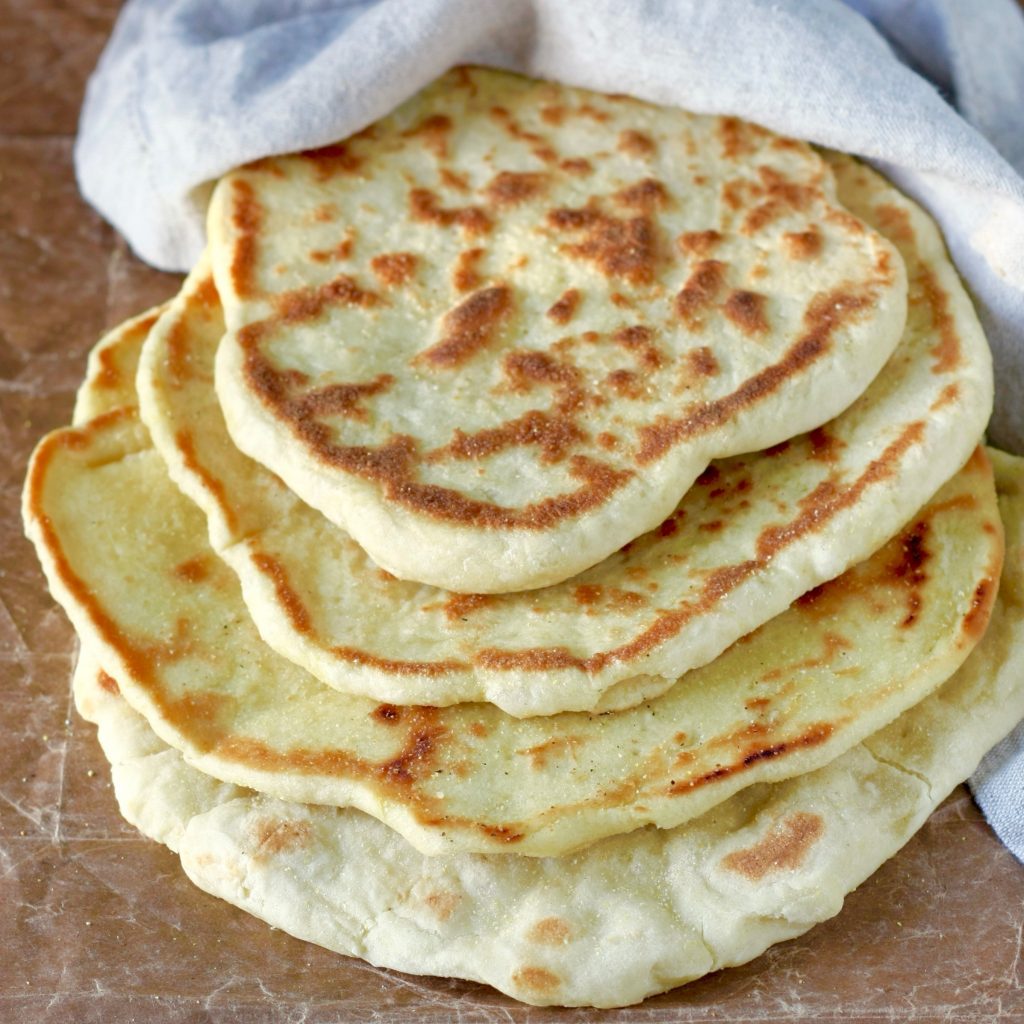With “pita bread” I always think of that blue Monday that I worked in a bake-off bread factory in Tilburg. What you don’t do as a student to make ends meet
Om het tempo van de voorbijschuivende pita’s bij te houden, moest je er 4 of 5 flink beetpakken in één hand. Dat lukte mij niet. Toen ik naar mijn buurvrouw keek, zag ik dat zij haar duim stevig in het bovenste pitabroodje gegraven had om het voor elkaar te krijgen. Die afdruk bleef ook duidelijk zichtbaar toen ze losliet. Dat kon ik gewoon niet. Dat moest nog gegeten worden!
Abusing pita’s?
For a few more hours I gave myself the opportunity to come up with my own working technique, but unfortunately. In principle, I don’t give up so quickly, but abusing pitas is the limit. The indignation with which I returned to the student house that afternoon is still a rewarding subject when we recall memories of that time. I have not eaten pita bread for a long time. And when I bought them, I carefully checked whether there was a thumbprint in the top pita.

It’s magic
Now I prefer to make them myself. The recipe for the dough comes from Hugh Fearnley-Whittingstall, although I have worked on it again over time. The basis is his magic bread dough from Veg! where you can also make pizza crusts, flat bread, buns and breadsticks. I make about 10 pita’s from this amount of dough. Hugh takes 12 out of it.
Freeze pita bread
You can freeze pita bread that you have left over. Bake them first.
Ingredients
- 500 grams of flour + some extra for forming the pita’s
- 1.5 – 2 teaspoons of salt
- 1 teaspoon dry yeast
- 1 tablespoon sunflower oil
- 325 milliliters * of hot water
replace this amount of water with 300 milliliters + a large tablespoon of Turkish yogurt for a softer bun.
Make pita bread yourself
Grease a large plastic bowl with some oil. Prepare a clean tea towel.
Mix all ingredients. I use a food processor for it, because it is a rather sticky dough. Transfer the dough to the plastic bowl and cover with the clean tea towel. Let rise for an hour.
Remove the baking sheet from the oven and place a sheet of baking paper on it. Preheat the oven to 220 degrees.
Pierce the dough with your fingers so that the dough sinks again. Divide the dough into 10-12 balls. Roll the balls into pita’s with a thickness of 5 millimeters.
Place the pitas on the baking sheet and let them rise for 15 minutes. Then bake them in 8-10 minutes. Repeat this with the remaining dough. (I use the grid for the second baking round, but you can also place them on baking paper that you slide on the baking sheet later.)
Hugh’s tip: fold the pitas in a tea towel and let them cool. Steam makes the rolls soft.
